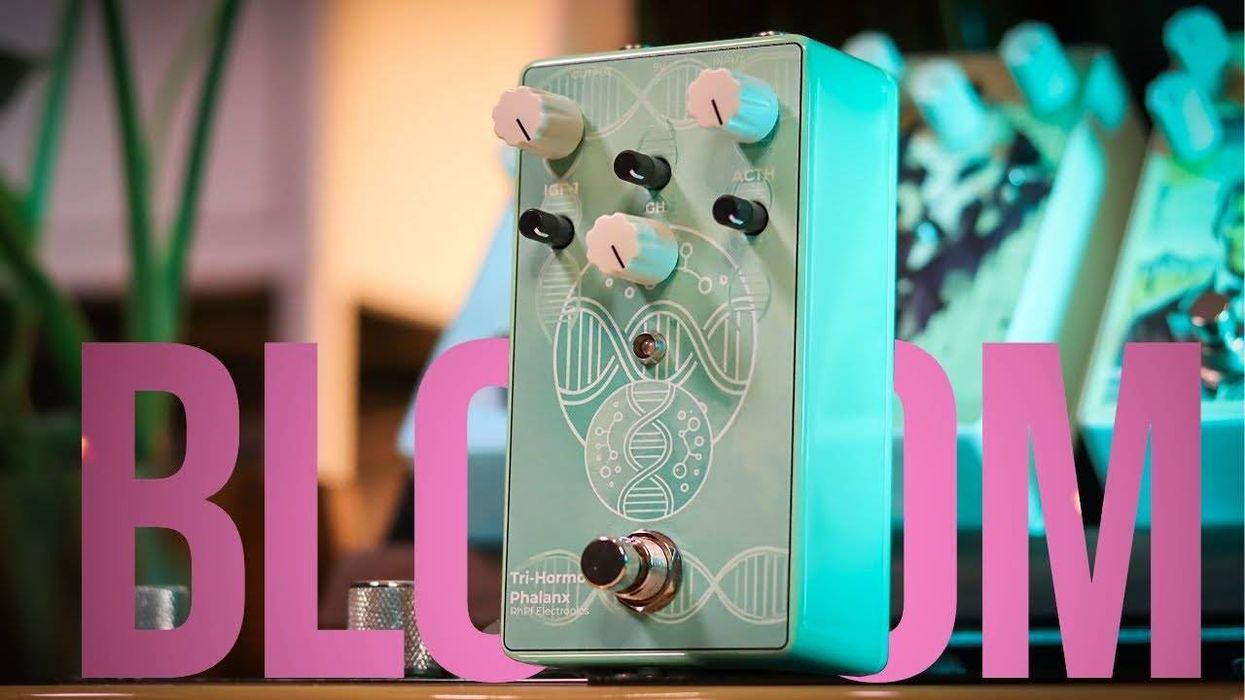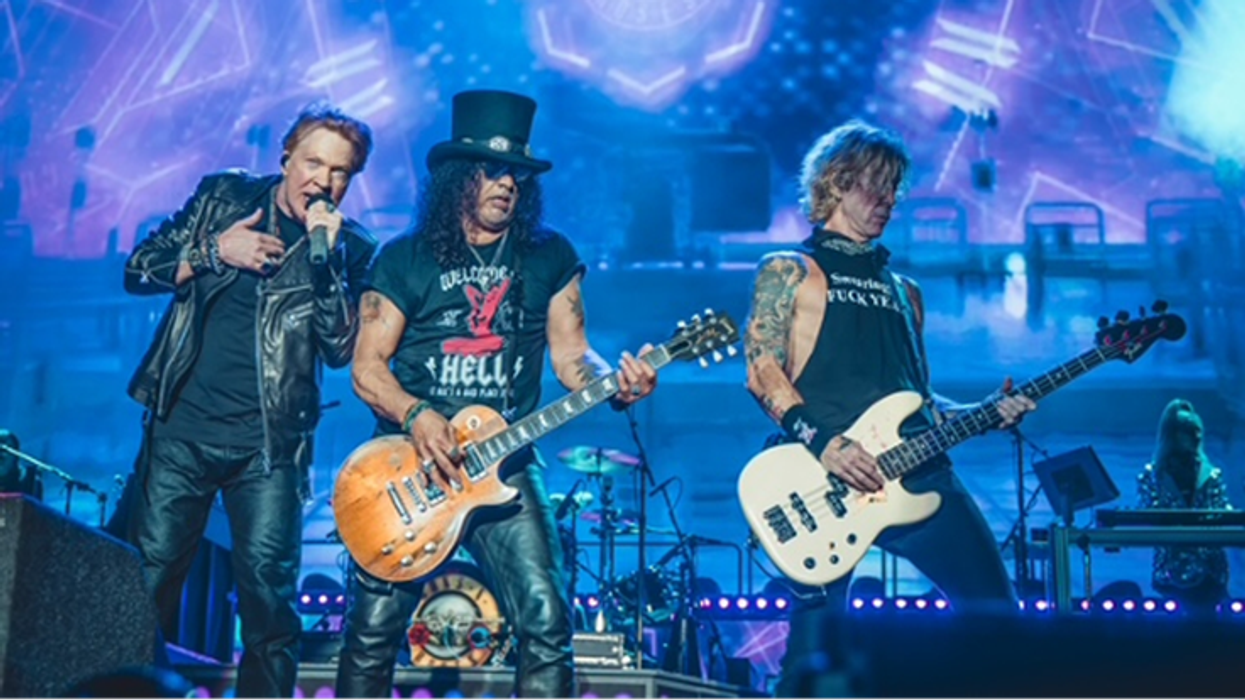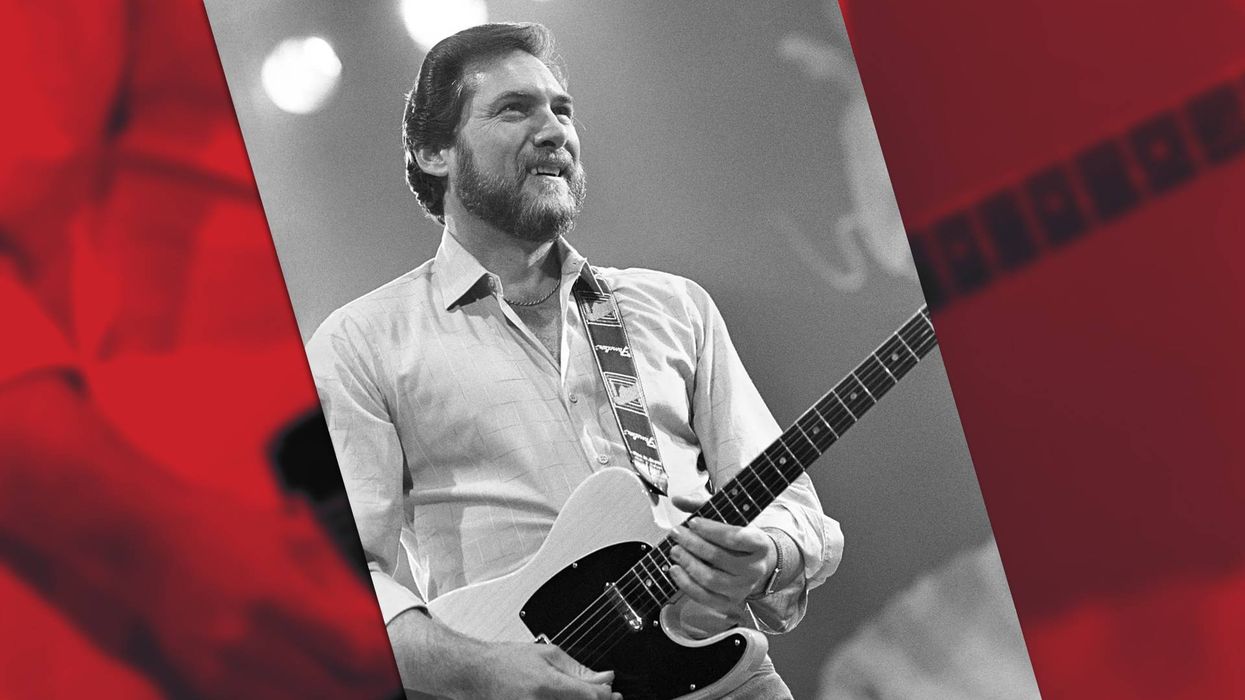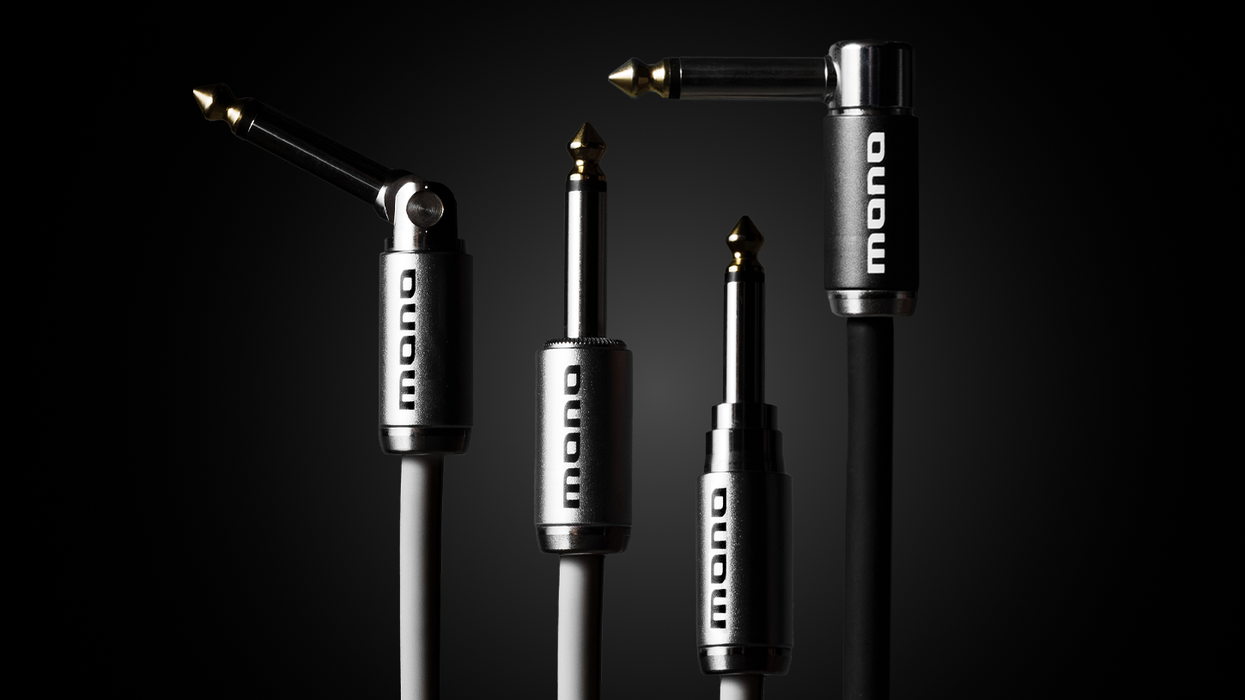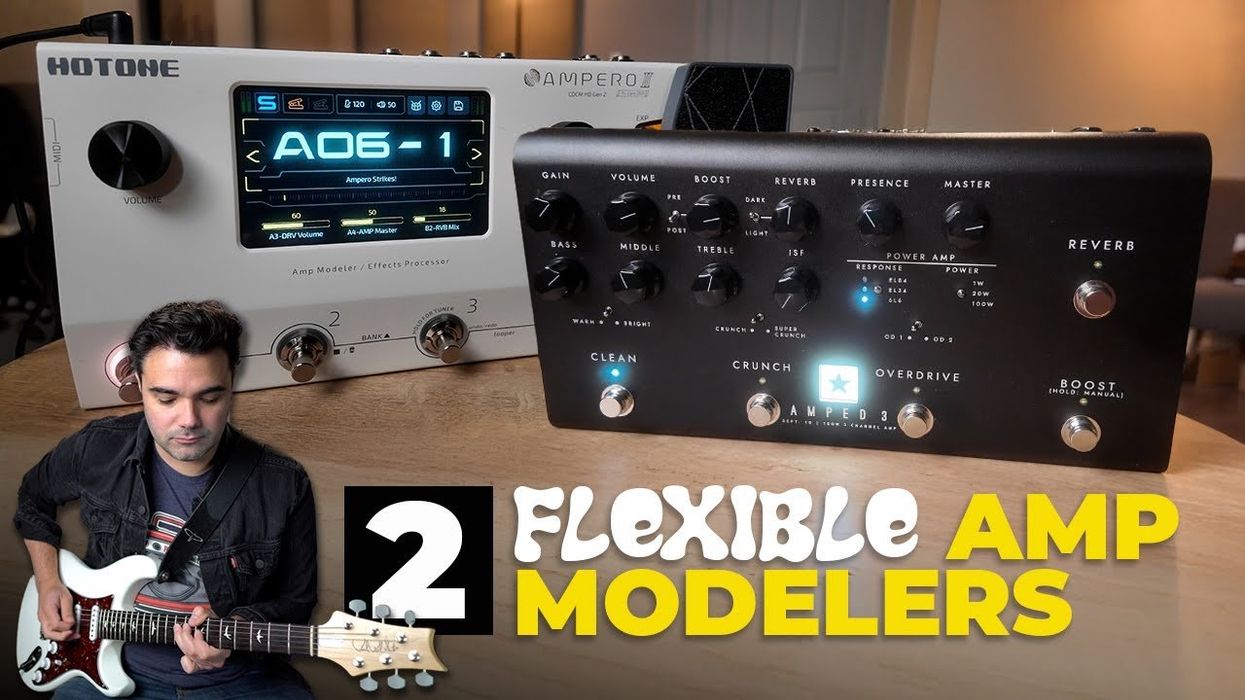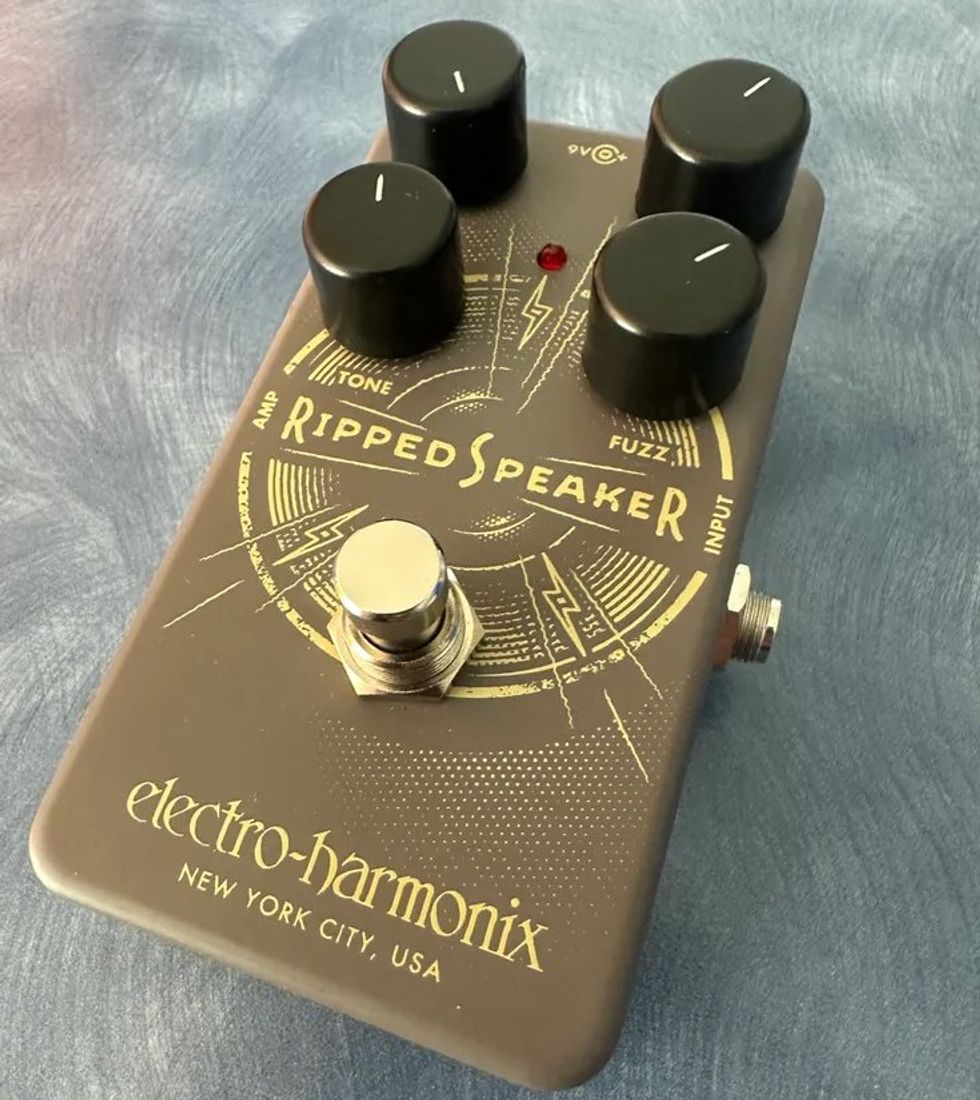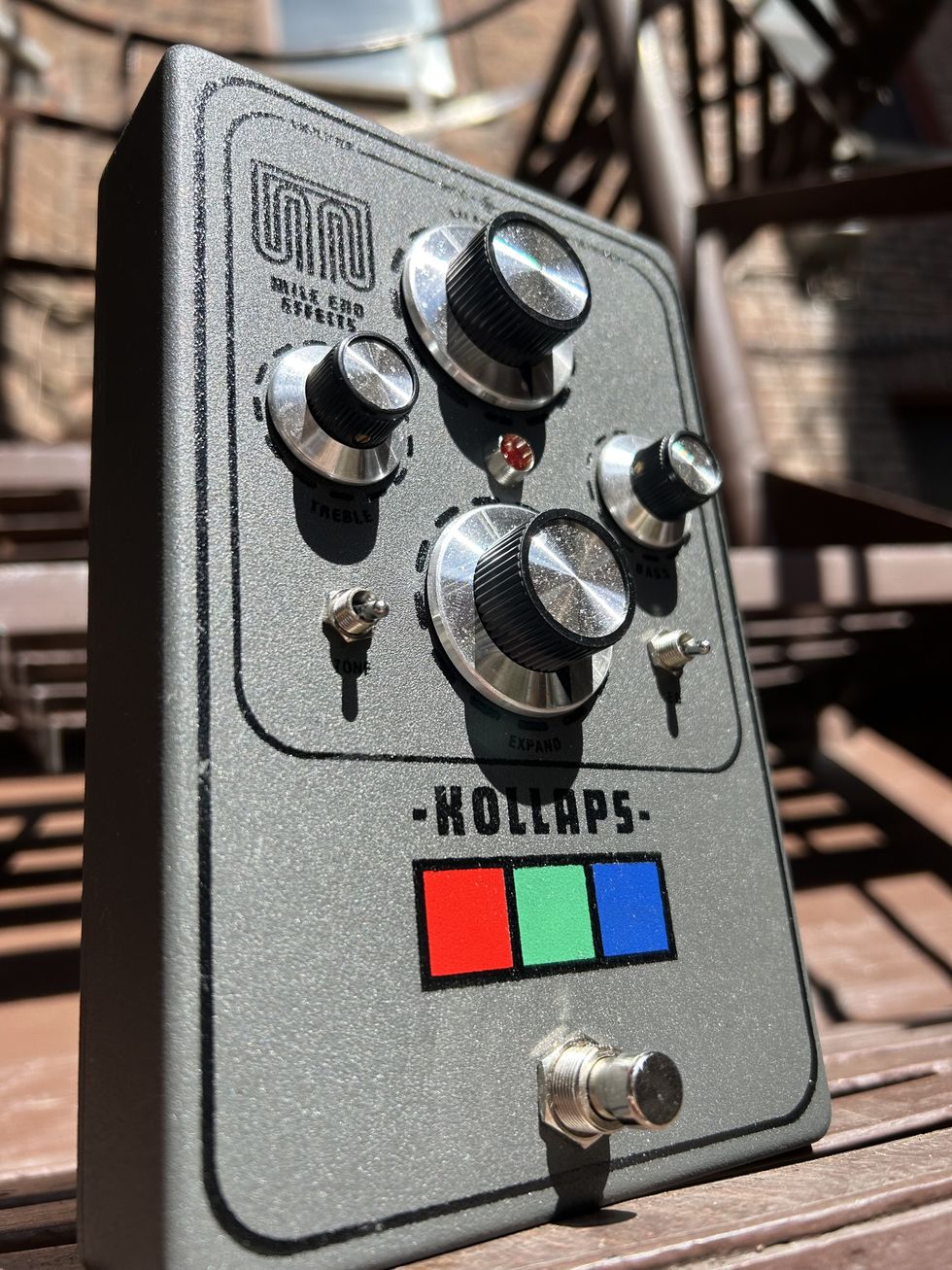Chops: Intermediate
Theory: Intermediate
Lesson Overview:
• Learn licks in the style of Chicago
blues master Otis Rush.
• Develop cool minor-blues
rhythm phrases.
• Understand how important it is
to bend strings in tune.
Otis Rush, ladies and gentlemen. One of the biggest influences on modern blues and rock guitar, and a guy I’ve been trying my darndest to copy ever since I heard him do “Feel So Bad” at age 13. He was a huge influence on me, and an often-tapped source by other not-quite-asinfluential- as-Kid-Andersen guitarists, such as Eric Clapton and Jimmy Page.
I jest, of course, but you can trace a direct line from Otis’ style to Clapton, Page, Peter Green, and Mick Taylor, who then influenced Eddie Van Halen. The line continues on from EVH to any number of unnamed dudes with spiky haircuts decked out in Ed Hardy and posing next to Britney Aquafina or Clay Lambert in today’s “music scene.”
Meanwhile, Rush is still living the bluesman’s fate by being grossly unrecognized by the masses and looking back on a career of constant bum deals and unfortunate circumstances. If you’re any kind of man or woman, and you haven’t already, buy all of his CDs right now! This column will still be here when you log out from Amazon.
Many blues fans swear by his earliest recordings on the Cobra label and he also put out great stuff on Chess (and Checker). Rush was featured on a very nice set on Vanguard’s Chicago: The Blues Today series, and all that stuff is classic must-have, required listening. But my favorite recordings are the 1968 LP he did for Atlantic, called Mourning in the Morning, and Right Place, Wrong Time, which he cut in 1971 and was released in 1975.
By that point in his career, he had switched from a Strat to an Epiphone Riviera with mini humbuckers, and in my opinion, that’s when he really found his sound—at least the sound I’ve been searching for most of my adult (if I may call it that) life. Of course, his Strat tone on the Cobra stuff is classic, and Ike Turner plays a bunch of badass guitar on those records as well, but I’m a Gibson guy at heart and the Epi is basically the same thing and just really does it for me.
The wonderful thing about his tone on the Atlantic album is that not only does his guitar amp sound amazing, you can also hear the acoustic tone of his guitar bleeding through his red-lining vocal mic, which adds just a whole ’nother dimension of sonic goodness to the stew. I’ve bought many a guitar and amp searching for Otis’ tone, but ultimately, it’s in your fingers. The most important and unique aspect of his sound cannot be taught in this lesson—I’m talking about his vibrato and his touch. That will take you a lifetime to assimilate, and if you’re looking for money and chicks, you might want to think about law school instead.
However, I’m going to show you some of his “secrets,” and try to avoid the most-often heard licks he pioneered, as you’ve heard them already a gazillion times on the records of Eric Clapton, Led Zeppelin, and Pink Floyd.
I don’t want to infringe on anyone’s copyrights here, so let’s say this example of a turnaround (over the V-IV-I progression) in Fig. 1 is from a song I call “Feel Like Crap,” from an imaginary album I call Sorrow at Sunrise. This one took me about eight years to get it to where I’m pretty cool with how I sound doing it, and I still can’t touch the master.

The key to getting the vibrato on the highest note is that it’s fairly fast, fairly wide, and somehow kind of relaxed in it’s attack, but not relaxed in intensity. Also try to catch the 3rd string very softly, so that the V note rings and wavers along, but it shouldn’t be anywhere near as present as the I note. It’s subtle shading.
This next tip pretty much applies to all bends: Get all the way up there! People who bend notes that don’t quite make it all the way up (unless you’re a master of intentional microtonality like Buddy Guy, Muddy Waters, or Mike Bloomfield) are at great risk of getting punched before too long if I’m in the room and in the mood. Take that to heart! Nothing annoys a person with a musical ear more than some dude making his “blues face” with a bent note that’s just a few cents flat. Hell, if you want to make your note jump out, do like Albert King and actually go a little bit sharp. This sound is especially effective on the 1st string and can make the note jump out favorably. Whatever you do, do it strategically, with conviction, and with a painful memory in the back of your mind! Remember Yoda’s words : There is no try. Do or do not.
Fig. 2 is a great way to start a slow blues solo in G. Hit that high G with all you’ve got, again with the subtle shading of the 3rd string in there, and wait for the panties to come flying your way, or if you’re in front of a blues crowd, the 2XL bowling shirts. The timing of this lick is pretty rubato (non-existent), except the last note should definitely be somewhere close to the downbeat of the I chord.
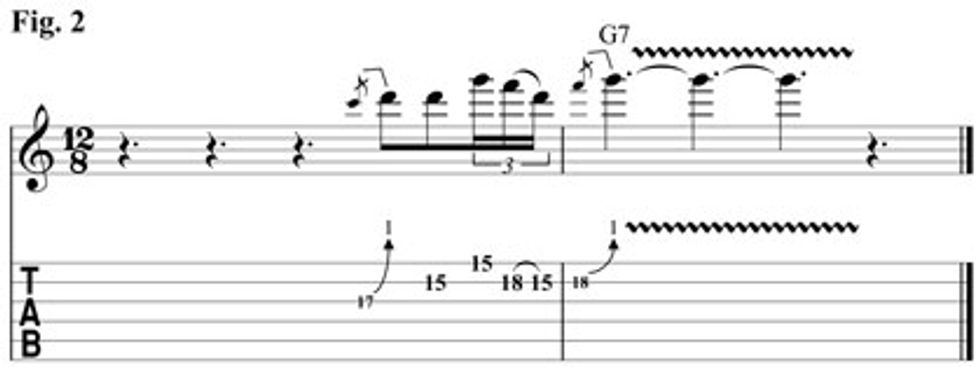
Yet another turnaround. Let’s say Fig. 3 was used as the intro for the imaginary track “Government Handout Sad Music” from an album we’ll call Not For Pleasure by the artist we’ll call Jiffy “Speedy Digits” Dumplings. This lick borrows heavily from Albert King, as Otis often would, but in true blues genius fashion, he adds some twists of his own, which, once you get this stuff down, you ought to do for your own damn self! Lastly, Otis is the king of minor blues, you might recognize Fig. 4 from a tune I’ll call “The Total Sum of Your Affection.”
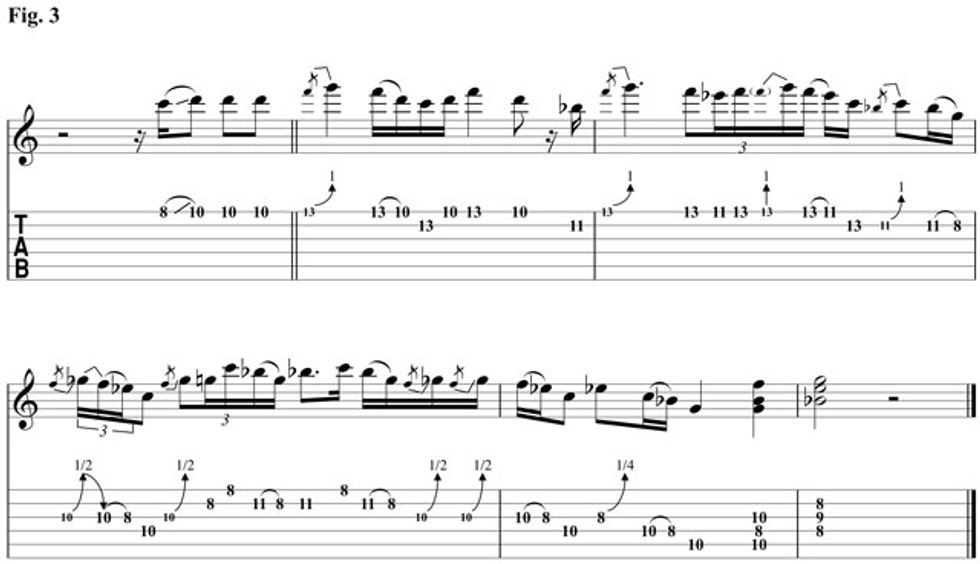
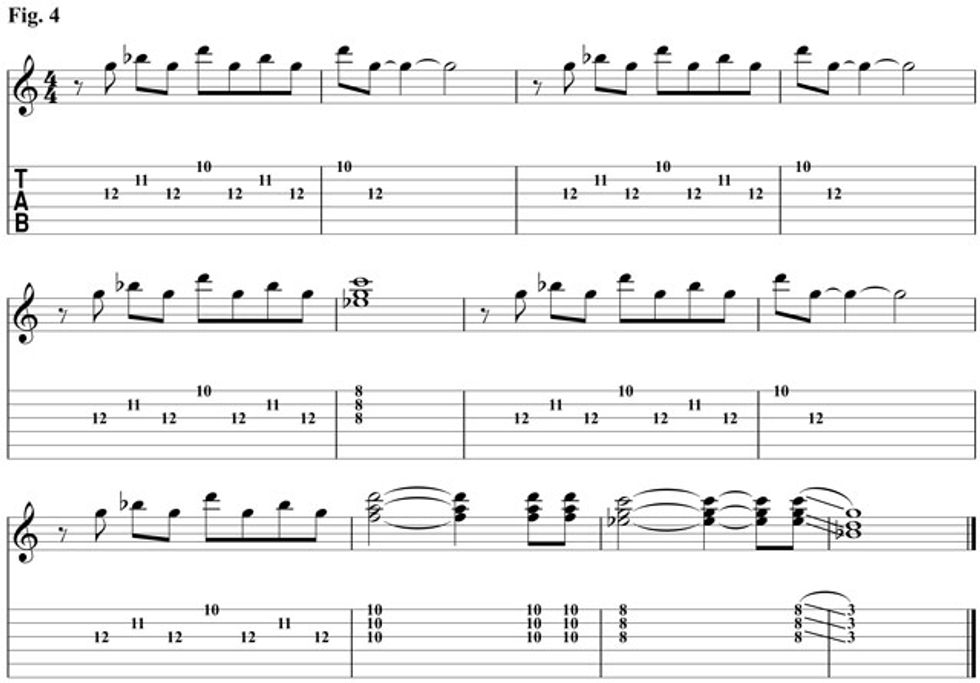
Until next time, my friends, may the Force be with you!
 Kid Andersen Currently the guitarist for Rick Estrin & the
Nightcats, Kid Andersen has recorded and
performed with Charlie Musselwhite, Elvin
Bishop, and many other blues legends.
Originally from Norway, Andersen is now based
in San Jose, California, with the immigration
status of “Alien of Extraordinary Ability.” For
more information, visit rickestrin.com.
Kid Andersen Currently the guitarist for Rick Estrin & the
Nightcats, Kid Andersen has recorded and
performed with Charlie Musselwhite, Elvin
Bishop, and many other blues legends.
Originally from Norway, Andersen is now based
in San Jose, California, with the immigration
status of “Alien of Extraordinary Ability.” For
more information, visit rickestrin.com.